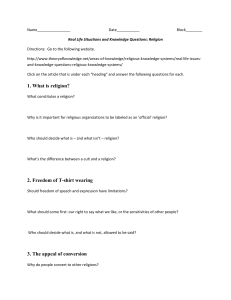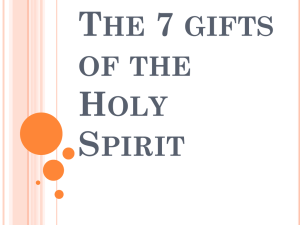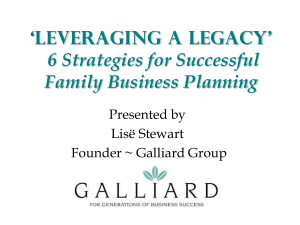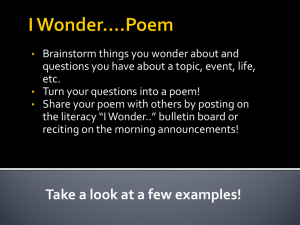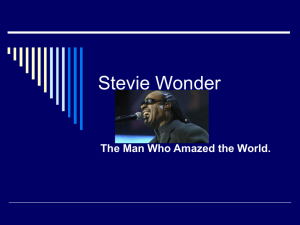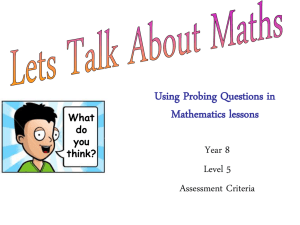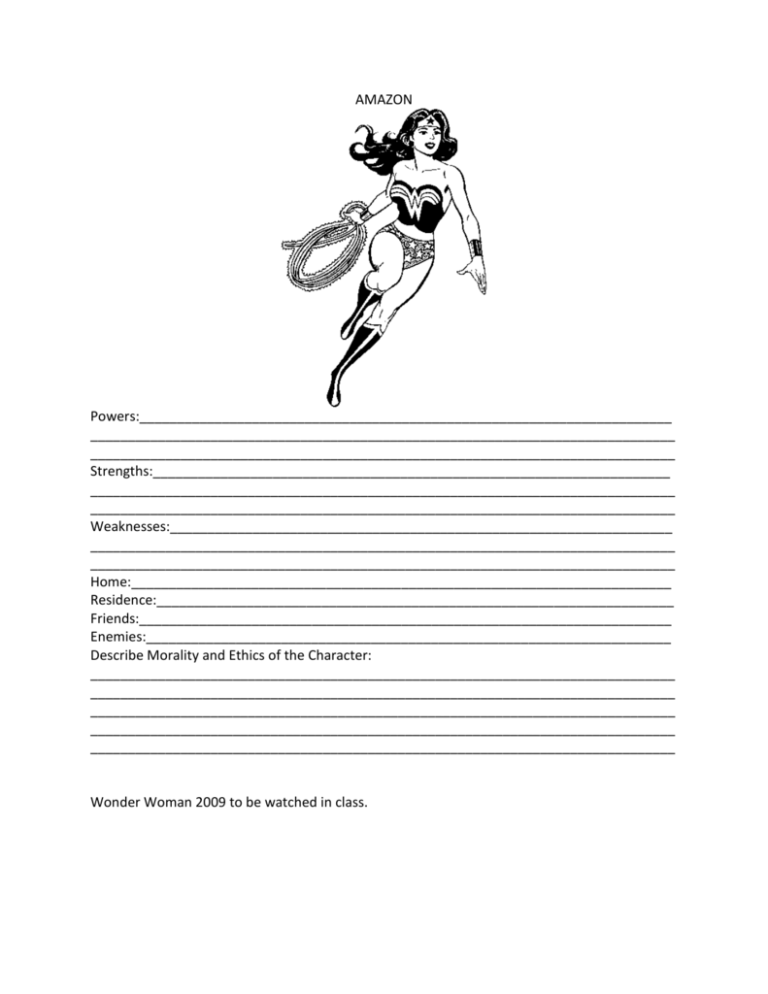
AMAZON
Powers:_______________________________________________________________________
______________________________________________________________________________
______________________________________________________________________________
Strengths:_____________________________________________________________________
______________________________________________________________________________
______________________________________________________________________________
Weaknesses:___________________________________________________________________
______________________________________________________________________________
______________________________________________________________________________
Home:________________________________________________________________________
Residence:_____________________________________________________________________
Friends:_______________________________________________________________________
Enemies:______________________________________________________________________
Describe Morality and Ethics of the Character:
______________________________________________________________________________
______________________________________________________________________________
______________________________________________________________________________
______________________________________________________________________________
______________________________________________________________________________
Wonder Woman 2009 to be watched in class.
The Legacy of Wonder Woman
An enlightening look at the feminist ideals that informed this
American icon
By Philip Charles Crawford -- School Library Journal, 03/01/2007
This year marks the 65th anniversary of one of comics’ oldest and most enduring characters,
Wonder Woman. For over half a century, she has entertained and inspired millions, appearing in
comic books, newspapers, novels, television, and cartoons. Her image is known throughout the
world, licensed on everything from Halloween costumes, Kraft brand macaroni & cheese, and
Underoos, to cookie jars, toothbrushes, and the American Library Association (ALA) poster,
“The World’s Greatest Heroes @ your library.” Along with Batman and Superman, she shares
the distinction of having been continually published in comic book form for more than six
decades. Like Snoopy, James Bond, Superman, and Tarzan, she has entered the collective
consciousness of 20th-century pop culture.
In the early 1970s, she was adopted as a role model by the feminist movement and appeared on
the cover of the inaugural issue of Ms. magazine. Yet few know that Wonder Woman was
created as a distinctly feminist role model whose mission was to bring the Amazon ideals of
love, peace, and sexual equality to “a world torn by the hatred of men.”
While Wonder Woman is one of the most fascinating comic book characters ever created, she is
seldom mentioned in professional books, Web sites, and ALA lists about graphic novels. Perhaps
many see her as too “old school,” no longer relevant in a world among such kick-ass, girl-power
heroines as Buffy, the Birds of Prey, Electra, and Manhunter. Maybe, in a world dominated by
pastel, tartan, and lollipop-colored “chick lit,” Wonder Woman’s overtly feminist message has
no bearing on a readership who seems to prefer (and adore) consumer-driven, self-obsessed
heroines. For whatever reason, our most enduring feminist icon of American popular culture
seems to have gotten lost in the shuffle. A brief exploration of Wonder Woman’s history will, I
hope, demonstrate why this heroine is important and deserving of a wide readership and a
prominent place on the library shelves.
When superheroes first began to appear in comic books of the late 1930s, the genre was
ostensibly an “all-boys club.” In fact, prior to Wonder Woman, there were very few costumed
heroines of any kind. Among the hundreds of comic books published during the 1930s, only a
scant few featured stories about costumed women heroes such as Black Widow, Invisible Scarlet
O’Neil, The Woman in Red, and Miss Fury. More common was the depiction of women as evil
seductresses, as the hero’s girlfriend (Lois Lane), or as his “help mate” (Bulletgirl and
Hawkgirl). In general, superhero comics of this era reflected and reinforced cultural norms about
gender. Images of male superheroes celebrated brute strength, physical perfection, male bonding,
and phallic imagery, while women were typically portrayed as helpless and in need of rescuing,
or as sexy, buxom pin-ups models, often in provocative bondage poses. Moreover, most
superhero comics were also violent and the hero resolved any and all conflict with physical
force. For example, in the earliest Batman stories, the caped crusader was a ruthless vigilante
who carried a gun and even murdered a couple of his adversaries.
In the early 1940s, a psychologist and feminist, Dr. William Moulton Marston, sought to change
this paradigm. Writing in The American Scholar, he discussed the negative effects of gender
stereotyping in popular culture: “Not even girls want to be girls so long as our feminine
archetype lacks force, strength, and power…. Women’s strong qualities have become despised
because of their weakness. The obvious remedy is to create a character with all the strength of
Superman plus all the allure of a good and beautiful woman.”
Marston wanted to create a positive role model for girls that would serve as a counter to the high
level of violence and the “blood curdling masculinity” he felt pervaded superhero stories. At the
time, he was already famous as the author of several best-selling books on psychology (and for
inventing the lie detector). As a columnist for Family Circle, he wrote an article extolling the
merits of comic books. In 1941, he was hired by M. C. Gaines to serve on the advisory
committee for DC Comics where he would further develop his ideas and create the first major
and important female superhero–Wonder Woman.
In late 1941, Wonder Woman made her debut in the pages of All-Star Comics and became the
lead feature in Sensation Comics #1 the following month, written under the pseudonym Charles
Moulton and illustrated by H. G. Peters. From the beginning, Marston infused the series with a
feminist ideology. Wonder Woman was an Amazon princess who had been sent by the goddess,
Aphrodite, to aid America in the war effort and to spread the Amazons’ message of love, peace,
and sexual equality. One of the central ideas of the strip was that through hard work and
discipline women could become strong and independent and free themselves from their
economic and psychological dependency on men.
Wonder Woman’s approach to crime fighting was different than male counterparts as well.
Where they used force to defeat the villain, she tried to reason with them and often convinced
them to reform. Only when this failed did she use force, or her magic lasso, which, like
Marston’s own lie detector, forced anyone bound by it to tell the truth.
However, like all superheroes Wonder Woman has her Achilles’ heel; if her bracelets are bound
together by a man, she loses her powers. In countless stories, she is chained and bound by male
villains, only to break free and triumph. The ropes and chains are symbols of patriarchy and the
drama is her ability to break the shackles of male domination they symbolize. Unfortunately,
most comic historians have ignored the feminist elements of the series, and focused on these
elements of bondage, reducing the complexity of Marston’s Wonder Woman mythos to little
more than a thinly disguised sadomasochistic sexual fantasy.
Dr. Marston’s heroine proved to be a tremendous success. At the height of her popularity,
Wonder Woman had a readership of 10 million and appeared in a total of four comics and a daily
newspaper strip. Unfortunately, this success would be short-lived. In 1947, Marston died, leaving
his heroine in the hands of writers who didn’t seem to understand or care about her. In the
postwar era of the 1950s and 1960s, Wonder Woman would lose much of her trademark
feminism and become more conventionally feminine with her adventures focusing on two central
topics: marriage anxiety and battling duplicates of herself.
By the late 1960s, DC Comics scrapped Marston’s concept entirely: they killed Steve Trevor, got
rid of Amazons, and stripped Wonder Woman of her superpowers. This “new” Wonder Woman
was Diana Prince, an ordinary woman who ran a mod-clothing boutique and fought crime in her
spare time. For many she was a thinly veiled imitation of Mrs. Emma Peel from the British TV
show The Avengers. Feeling that the character had been stripped of her power, Steinem and
others pressured DC Comics to bring back the original character. With some reluctance, they
agreed. Wonder Woman got back her powers, her costume, and her Amazon sisters, but the
series lacked the complexity and feminist flare of Marston’s original stories.
During the 1970s, Wonder Woman entered America’s living rooms in the Saturday morning
cartoon Superfriends and in her own prime-time show. Meanwhile, the comic book series
suffered from constant changes in direction. Creatively, the Wonder Woman book was dying a
slow and painful death.
With nowhere left to go but down, DC Comics decided to give the character a new start. They
cancelled the original and launched a brand new series with help from Gloria Steinem.
Beautifully written and illustrated by George Perez, this new series splendidly updated the
original while staying true to the concepts established by Marston. This new Wonder Woman
provided readers with the best and most faithful version of the character since Marston’s
original.
For anyone interested in reading the original stories, I would recommend Wonder Woman
Archives series (DC Comics), which collects the first four years worth of strips. These stories are
some of the most unique of the 1940s, featuring a complex blend of feminism, wartime
patriotism, Greek mythology, and bondage imagery in stories that move seamlessly through the
genres of science fiction, fantasy, and mythology. The best stories from Perez’s tenure have been
collected into a four-volume series that begins with Wonder Woman: Gods and Mortals (DC
Comics, 2004). Other volumes such as Paul Dini’s Wonder Woman: Spirit of Truth (2001) and
Greg Rucka’s Wonder Woman: Land of the Dead (2006, both DC Comics) provide a thoughtful
analysis of Wonder Woman’s heroism.
The best Wonder Woman stories inspire us to imagine a more equalitarian world and encourage
us to become agents of social change. They have the power to inspire girls (and boys) to become
heroes in their own lives. In this era of books about gossiping, “mean girls,” and YA novels
about distressed young women who starve, mutilate, and kill themselves, doesn’t Wonder
Woman’s feminist message of peace, justice, and sexual equality need to be heard?
Author Information
Philip Charles Crawford is the Library Director for Essex High School (VT). His review of Greg Rucka’s
Wonder Woman: Mission’s End appears on p. 238.
http://www.schoollibraryjournal.com/article/CA6417196.html
http://girl-wonder.org/papers/robbins.html
Suffering Sappho! A Look At The Creator & Creation
of Wonder Woman
by Charles Lyons
Posted: Wed, August 23rd, 2006 at 12:00AM PST
NOTE: The following article deals with adult situations.
She wasn't jettisoned from a doomed planet, she didn't
witness the brutal murder of her parents, and she was never
injected with radioactive venom, but the true story of
Wonder Woman's origin is one of the strangest and most
fascinating of any superhero. The Amazon princess debuted
in the back of "All-Star Comics" #8 in December 1941,
graduated to the cover story of "Sensation Comics" #1 in
January, and merited her own title by the summer of 1942.
Her powers were similar to those of Superman (who had
not yet learned to fly, see through walls, or fear
Kryptonite), but with a couple of interesting twists: she
Wonder Woman creator William
could deflect bullets with the heavy metal bracelets she
Moulton Marston and his family.
wore on her wrists, and she carried a magical golden lasso
which compelled anyone it snared to tell the truth.
Wonder Woman was not the first female superhero - she had been beaten to the punch by the
likes of the Black Widow (no relation to the Marvel character) and Bulletgirl - but she quickly
became the most successful and remains to this day the best known. DC Comics recently
relaunched the "Wonder Woman" title with a new #1 written by Allan Heinberg, Co-Executive
Producer of "The OC," and a feature film is in the works from "Buffy the Vampire Slayer"
creator Joss Whedon. Wonder Woman has been popular for over sixty years - and controversial
from the moment she was born.
Wonder Woman's creator was William Moulton Marston, a Harvard-educated psychologist,
lawyer and provocateur who invented a precursor of the modern polygraph (the likely inspiration
for Wonder Woman's lie-detecting lasso). In October 1940, the popular women's magazine
"Family Circle" published an interview with Marston entitled "Don't Laugh at the Comics," in
which the psychologist discussed the unfulfilled potential of the medium. Maxwell Charles
Gaines, then publisher of All-American Comics, saw the interview and offered Marston a job as
an educational consultant to All-American and sister company DC Comics. Realizing that strong
female role models in comics were virtually nonexistent, Marston sold Gaines on the concept of
a superheroine who would combine "all the strength of a Superman plus all the allure of a good
and beautiful woman" and began writing stories under the pen name Charles Moulton,
combining his and his publisher's middle names.
Subtext is as much a part of comic books as superpowers, from the unconscious (Superman as
the ultimate assimilated immigrant) to the unintentional (Fredric Wertham saw Batman and
Robin's relationship as pedophilia). Wonder Woman's world is one that practically begs for
analysis: coming from a utopian island inhabited only by women, she wears heavy manacles on
her wrists and carries a rope everywhere she goes; she spent many of her early stories in bondage
or restraining others, and even disciplined villains on Transformation Island, an Amazonian
rehabilitation center that trained its all-female prison population to submit to "loving authority."
Even her classic catch-phrase raises the eyebrow - what's with all that suffering Sappho is always
doing, anyway?
Restraining the protagonist isn't necessarily sexual - after
all, it's one of the few ways the villain has to incapacitate the hero or heroine without killing
them (and thereby ending the story) - but in Marston's case much of this subtext was indeed
intentional. As he told interviewer Olive Richard in the August 14, 1942 "Family Circle," "Tell
me anybody's preference in story strips and I'll tell you his subconscious desires...Superman and
the army of male comics characters who resemble him satisfy the simple desire to be stronger
and more powerful than anybody else. Wonder Woman satisfies the subconscious, elaborately
disguised desire of males to be mastered by a woman who loves them."
But Marston was intent on more than merely fulfilling the fantasies of his male readers. In a
letter to comics historian Coulton Waugh, he wrote, "Frankly, Wonder Woman is psychological
propaganda for the new type of woman who should, I believe, rule the world." Marston believed
that submission to "loving authority" was the key to overcoming mankind's violent urges, and
that strong, self-realized women were the hope for a better future. Wonder Woman was very
consciously Marston's means of spreading these notions to impressionable young minds. As he
said to Olive Richard, "I tell you, my inquiring friend, there's great hope for this world. Women
will win!" He then goes on, "When women rule, there won't be any more [war] because the girls
won't want to waste time killing men...I regard that as the greatest - no, even more - as the only
hope for permanent peace."
With this unusual brand of feminism as his stated aim,
Marston filled his stories with bondage (both male and
female), spanking, sorority initiation rituals, cross-dressing,
infantilism, and playful domination. Armies of slave girls
were everywhere, and hardly an issue went by without a
full-body panel of Wonder Woman bound from head to toe.
In "Sensation Comics" #35 (November 1944) Wonder
Woman even lets slip that rope bondage was a popular
pastime back home. Apparently the best way to learn about
domination was to submit to it yourself: while Marston
Panel from "Sensation Comics"
personally advocated female domination of men, many of
#35, November, 1944
Wonder Woman's adversaries were female themselves, and
she often seemed to find herself at their mercy (perhaps this
is what she meant by Sapphic suffering). Just as Superman eventually developed an allergy to
Kryptonite, Wonder Woman had an Achilles heel of her own, and of course it had to do with
bondage. Her bracelets were reminders of the defeat of the Amazons by Hercules, and if ever
welded together by a man, she would lose her strength. Consequently, many of the villainesses
kept a handy male in their employ for just this service
It was no secret to anyone paying attention that Marston was an enthusiastic advocate of bondage
and domination, and he did not escape controversy. The Child Study Association of America
accused Marston of being a sadist. Another critic characterized Marston's agenda as leading to
"dictator dominance." In 1943, a fan serving in the Army wrote to Gaines, "I am one of those
odd, perhaps unfortunate men who derive an extreme erotic pleasure from the mere thought of a
beautiful girl chained or bound…Have you the same interest in bonds and fetters that I have?"
Editor Sheldon Mayer tried to tame some of the more extreme elements but later admitted he had
"probably made it worse." For his part, Marston fiercely defended his creation, declaring in a
letter to his publisher:
"This, my dear friend, is the one truly great contribution of my Wonder Woman strip to moral
education of the young. The only hope for peace is to teach people who are full of pep and
unbound force to enjoy being bound ... Only when the control of self by others is more pleasant
than the unbound assertion of self in human relationships can we hope for a stable, peaceful
human society ... Giving to others, being controlled by them, submitting to other people cannot
possibly be enjoyable without a strong erotic element."
Despite - or perhaps because of - the controversy, sales of "Wonder Woman" were strong, so for
the most part Gaines set aside any doubts he may have had and let the psychologist have his way.
Marston's erotic proclivities may have been plain to the general public, but his private life
contained a bigger bombshell. The psychologist's superheroine was at least partly inspired by his
wife, Elizabeth Holloway Marston, but there were actually two Wonder Women in the family .
Marston wasn't just kinky, he was a polyamorist.
The clues are in Marston's interviews with "Family Circle," conducted by a young woman named
Olive Byrne, who was in fact, the aforementioned interviewer Olive Richard. Though he refers
to Byrne as "my Wonder Woman" and claims her "Arab 'protective' bracelets" were the
inspiration for the ones worn by the Wonder Woman character, Byrne herself never disclosed to
readers that she was romantically involved with her subject. In fact, Byrne was a former student
and research assistant who moved in with Marston and his wife in the late '20s and subsequently
bore him two sons. The exact nature of the women's relationship is not known, but it's clear that
they were very close. Not only did the two know about each other and raise each other's children,
Elizabeth Marston formally adopted Byrne's children as her own and even appears to have
named her daughter after Olive.
While Olive Byrne may have provided the physical inspiration for Wonder Woman, Elizabeth
Marston was an Amazon in her own right, getting degrees in psychology and law, putting herself
through school and working to support the family for thirty-five years. "Olive stayed home with
the kids, while Mom continued to work," said Elizabeth's son Pete. "It was a wonderful situation,
a win-win deal for everyone." Indeed, by all accounts Marston's unconventional family was a
happy one. "It was an arrangement where they lived together fairly harmoniously," said
Marston's son Byrne to biographer Les Daniels. Sheldon Mayer, who became a family friend,
remembered Marston as "the most remarkable host, with a lovely bunch of kids from different
wives and all living together like one big family - everybody very happy and all good, decent
people."
Unfortunately, Marston was unable to enjoy his happy home life for long, as he first contracted
polio and then succumbed to cancer in 1947, reportedly continuing to write from his deathbed.
After Marston's death, his widows continued to live together for another four decades until
Olive's death in the late eighties. As Byrne Marston described it, "It's kind of crazy, but it worked
out and they got along quite well. They were just a pair from then on until they died." Elizabeth
Marston died in 1993, at the age of 100.
In modern terms, Wonder Woman might be best described
as a "bi poly switch." But with her creator's departure, the
Amazon lost her enthusiasm for bondage and much of her
proto-feminist message (within a couple years she had a
newfound appreciation of matrimony, and "Sensation
Comics" had become a romance book). Marston's theme of
submission to loving authority failed to transform society
and caused no apparent increase in sexual deviancy. His
"American matriarchy" has failed to materialize, and in
spite of tremendous advances in civil rights, gender
The name of Reform Island was
relations, and sexual freedom, we still live in a society
later changed to Transformation
where gay marriage is hotly opposed and Marston's unusual Island.
lifestyle remains controversial.
Marston may have been naive and even misguided in some of his aims. But he created an
enduring feminist icon who was adopted by Gloria Steinem as the cover girl for the first issue of
"Ms." magazine and stands with Superman and Batman as one of the longest-lasting superheroes
in comics. She has also become a popular symbol for gays, lesbians, and others whose sexual
identity lies outside of mainstream convention. Allan Heinberg, new "Wonder Woman" writer, is
openly gay, as is Phil Jimenez, who wrote and drew the characters' stories from 2000-2003.
Heinberg told Gay.com:
"You know, as a gay man, you would think I would be principally attracted to characters like
Batman or Superman or Robin, but for some reason I identify most strongly with [Wonder
Woman], because even within the superhero society she's a bit of an outsider."
Given her origins, Wonder Woman's role as a champion of tolerance seems
entirely fitting. Marston believed that in the future the world would be ruled by
love rather than hatred or fear. Hopefully, someday he'll be proven right.
http://www.comicbookresources.com/?page=article&id=7921
June 29, 2010
Makeover for Wonder Woman at 69
By GEORGE GENE GUSTINES
Wednesday is a good day for Wonder Woman. This 69-year-old superheroine, published by DC
Comics, will don a new — and less revealing — costume and enjoy the publication of Issue No.
600 of her monthly series.
The costume ties into an alternative history for the character devised by J. Michael Straczynski,
the new writer of the series, and into a quest by DC to shine a critical and creative spotlight on
the heroine, who stands with Superman and Batman in its primary triumvirate of superstars,
despite her series’s modest sales.
In the reimagining of her story, Wonder Woman, instead of growing up on Paradise Island with
her mother, Queen Hippolyta, and her Amazon sisters, is smuggled out as a baby when unknown
forces destroy her home and slaughter its inhabitants.
Mr. Straczynski, who created the television show “Babylon 5” and wrote the screenplay for
“Changeling” in 2008, starring Angelina Jolie, said in an e-mail message that he wanted to
address “the wardrobe issue” as soon as he took the job.
“She’s been locked into pretty much the exact same outfit since her debut in 1941,” Mr.
Straczynski wrote. “If you’re going to make a statement about bringing Wonder Woman into the
21st century, you need to be bold and you need to make it visual. I wanted to toughen her up, and
give her a modern sensibility.”
He added, “What woman only wears only one outfit for 60-plus years?”
Given Wonder Woman’s pre-eminence as a female character in the largely male superhero
pantheon, her looks have always been a matter of more than casual interest, to both fanboys and
feminists. In a 2006 interview about her work on the series, the novelist Jodi Picoult said: “One
of the first things I did was ask if we could give her breast-reduction surgery, because as a
woman, I know you wouldn’t fight crime in a bustier. But I was somehow shot down by DC.”
The new costume was designed by the artist Jim Lee, who in February was named co-publisher
of DC, alongside Dan DiDio. Given the assignment, “my first reaction was, ‘Oh my gosh,’ ” Mr.
Lee said in an interview. But he welcomed the challenge: “When these characters become so
branded that you can’t change things, they become ossified.”
The new look — with an understated “W” insignia, a midnight blue jacket and a flinty fusion of
black tights and boots — is darker than the famed swimsuit-style outfit, and aims to be
contemporary, functional and, as Tim Gunn of “Project Runway” might say, less costumey.
Given the hope that the character will one day have her own international film franchise (a
feature has long been gestating at Warner Entertainment, DC’s parent company), one test of the
design was to imagine how it would look standing next to, say, Batman’s politically neutral
ensemble. “The original costume was the American flag brought to life,” Mr. Lee said. “This one
is a little more universal.”
Mr. Lee has drawn his share of sexy superheroines (the X-Men’s Rogue among them), some in
skimpy costume, and knows what many fans will ask: “Why am I covering up her legs?”
Ultimately, he wanted her to look strong “without screaming, ‘I’m a superhero.’ ”
The arrival of Issue 600 is a bit of comic-book sleight of hand, or, as DC calls it, a return to
historical numbering. Wonder Woman’s first self-titled series, which begin in 1942, ended with
No. 329. The character was then overhauled, her previous continuity erased, and she starred in
Volume 2 as a heroine new to the world. That incarnation lasted 226 issues. Another new
direction spurred a third volume (and, to collectors who care about such things, another Issue No.
1) that ran for 44 issues. Do the math, and what would have been Issue No. 45 is now Volume 1,
No. 600.
The new costume will almost certainly be better received than the curveball thrown Wonder
Woman in 1968, when she lost her powers, dressed mod and practiced martial arts. It took the
attention of no less than Gloria Steinem to protest the change, and to help get the Amazon back
into her star-spangled duds. Ms. Steinem went on to use Wonder Woman, resplendent in red,
white and blue, on the cover of the first issue of Ms. magazine in 1972. A cover line proclaimed,
“Wonder Woman for President.”
That’s the kind of attention Mr. Straczynski thinks she deserves: “Wonder Woman is a strong,
dynamic, vibrant character who should be selling in the top 20, and I’m going to do all I can to
get her there.”

